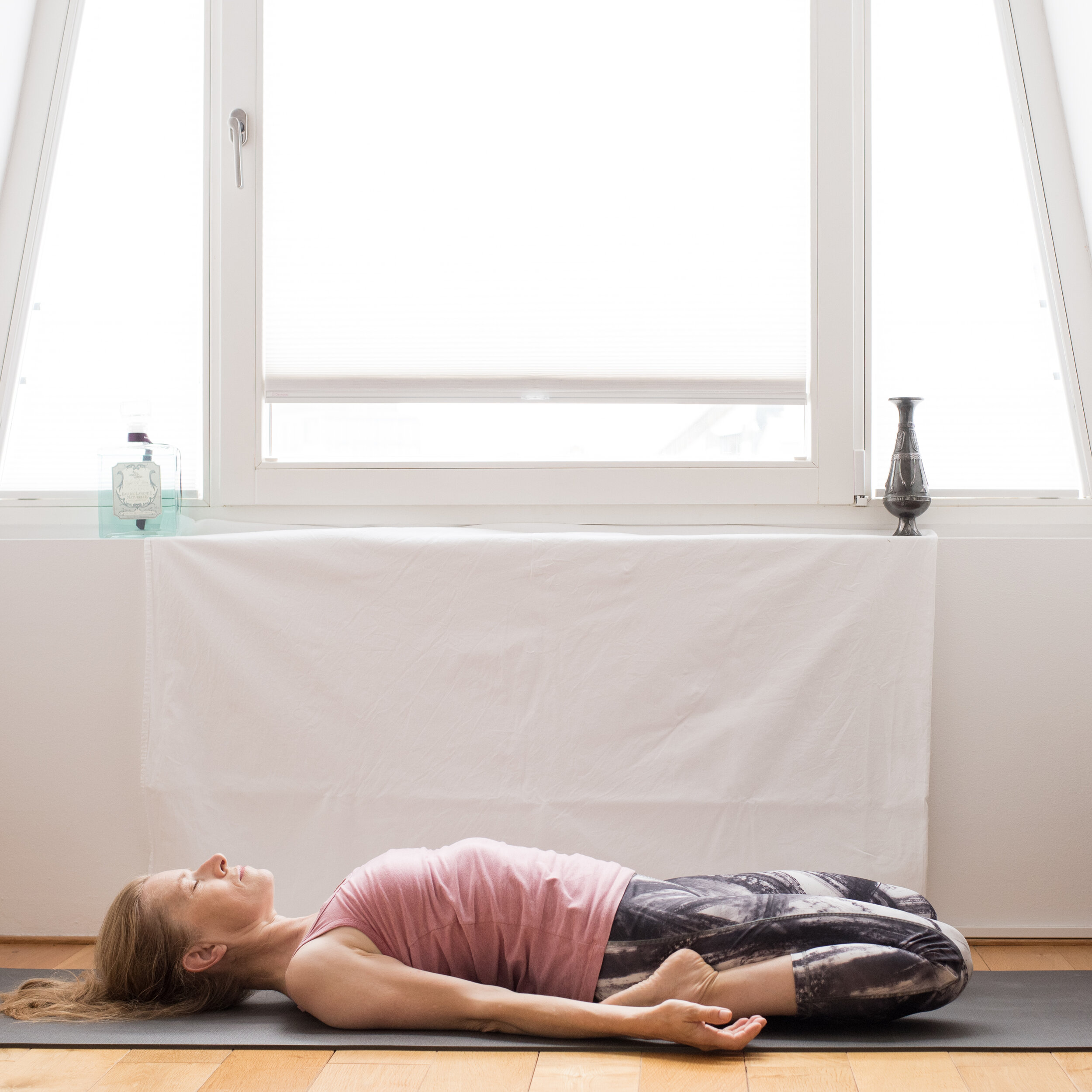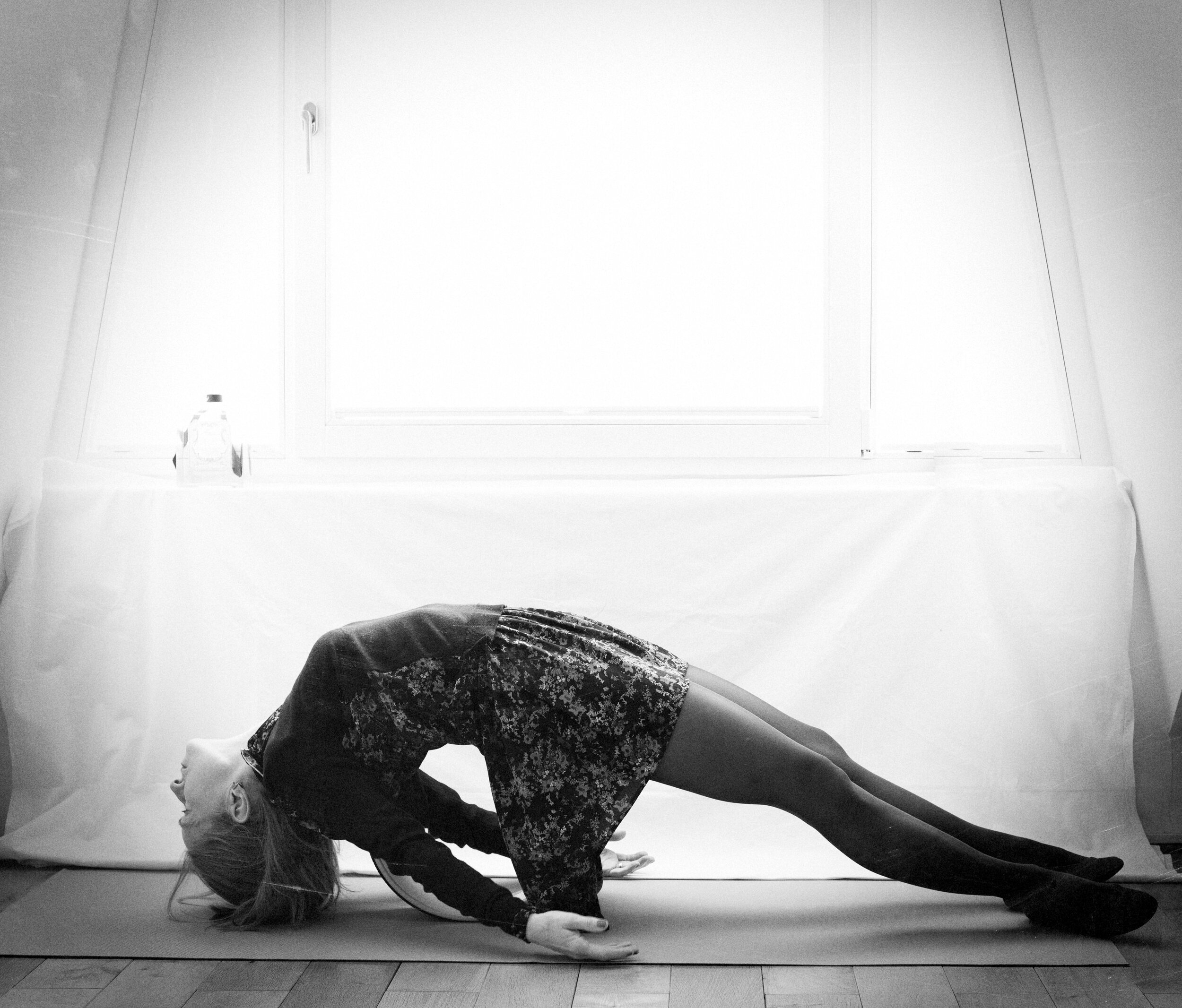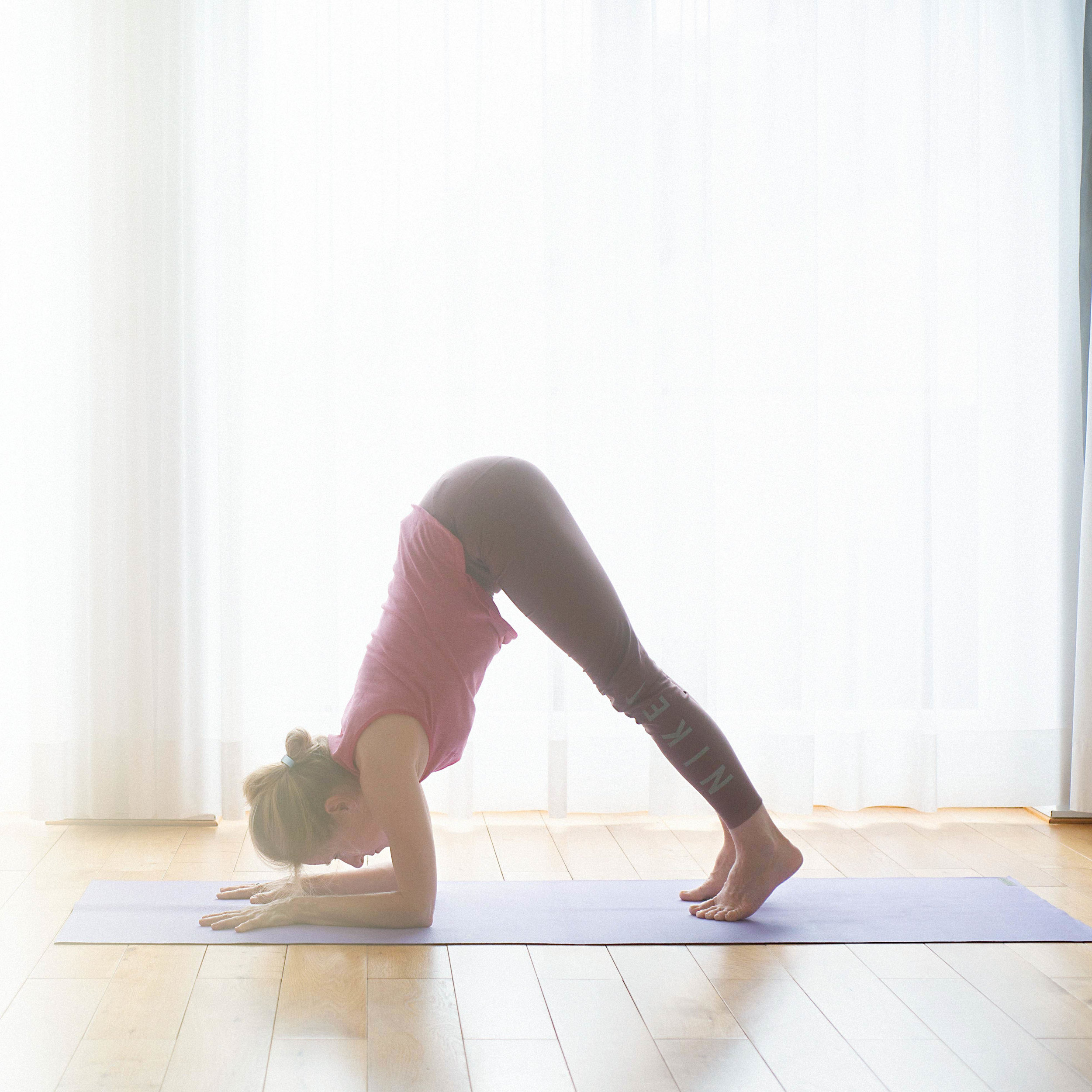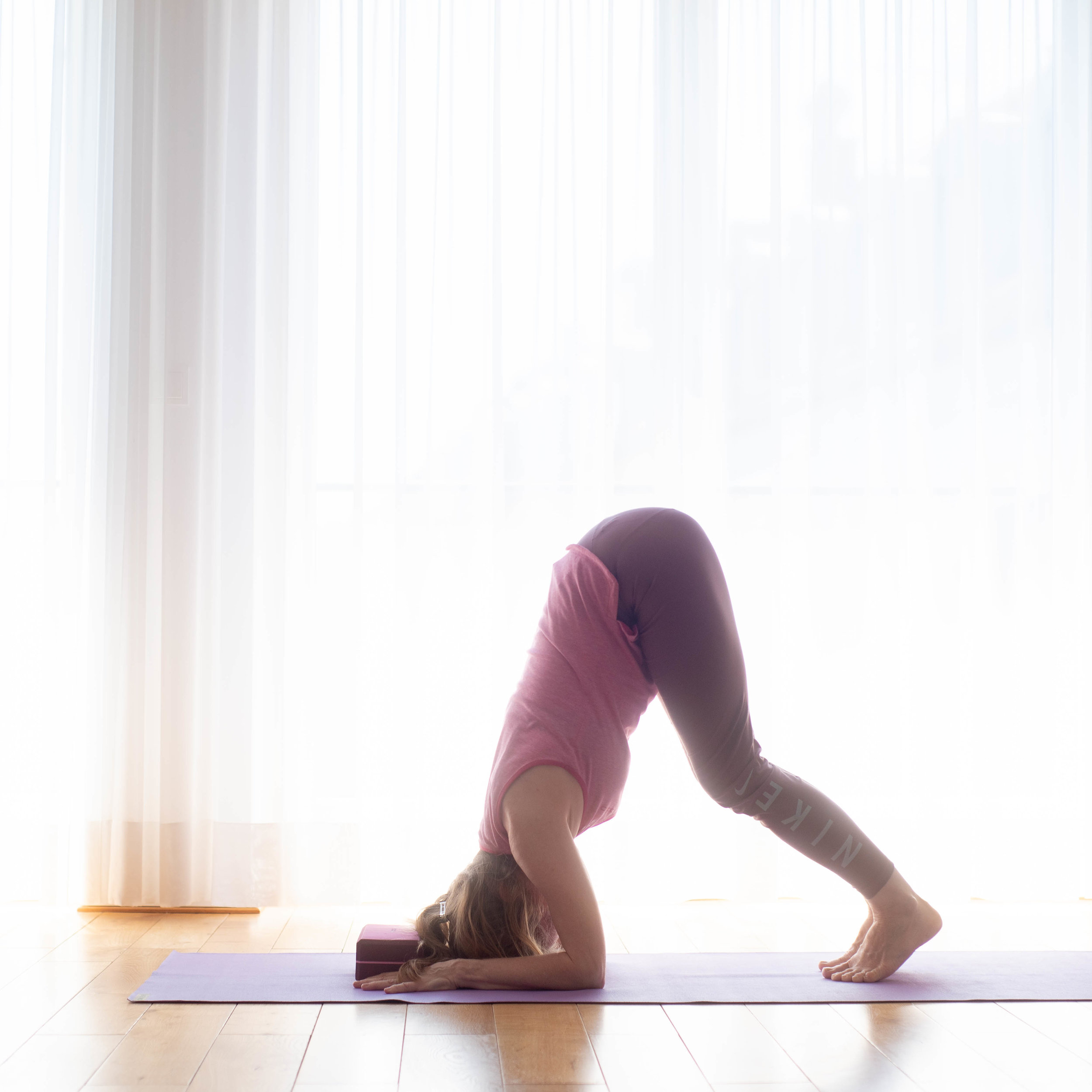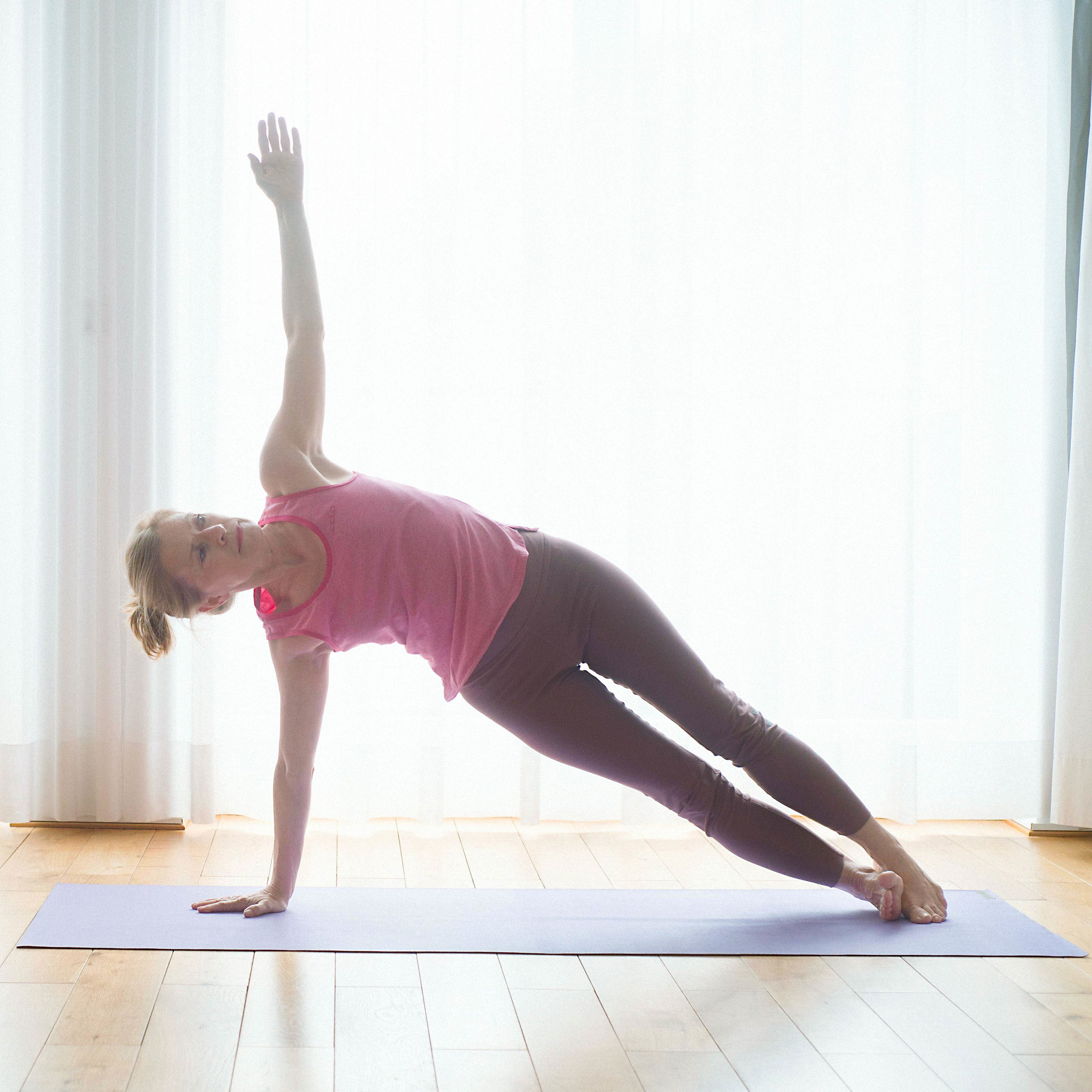Bhekasana
Bhekasana, August 2020
Bhekasana is the next asana after salabhasana in the intermediate Ashtanga series. It’s not my favorite asana. It feels awkward to press the feet to the ground. It’s an asana that is part of the game. It teaches me to practice also less liked asanas. Likes and dislikes change. Simply being an observer is a good mental exercise.
Usually I do an extra exercise before this pose:
This exercise is rather easy if one allows that the knees move away from each other. The challenge is to keep the thighs parallel to each other. This lengthens the thighs. It stretches the front muscles of the legs. This allows to get deeper into back bending.
Some asanas I like, others I don’t like. I practice them all with the same passion. Something would be missed if I practiced only asanas that I like and that I’m able to do nicely. The variety of different asanas makes the practice so interesting.
The process is volatile
Not one single practice is like another one.
On Sundays (today) my yoga week begins. My arm was still a bit warm and hardened due to the vaccination, but I could practice. After a break of three days I felt stiff. The practice today was a warm-up. My approach was rather easy-going than ambitious. Only one thing I wanted to do and I did it. I held urdhva dhanurasana for one minute. It was hard, but I could feel that it’s going to be easier. Two weeks ago I couldn’t hold this position so long. When it gets tough, I start counting. After 15 breaths I walk my hands a tiny bit closer to the feet. It distracts me from the thought that I cannot hold this pose for another fraction of a second. I know, I can. After 5 more breaths the minute is over. The sound of the timer is impatiently awaited already.
More important than having practices that are mega, is to practice. This stiff practice today is the basis for the good ones to come. One must love the process. The process is volatile. It comes with many different feelings. They range from joy to frustration.
Ups and downs are part of life, too. Some days are excellent others not. Sometimes we blame people and things for our days, but this doesn’t help much. On the mat we learn to stay relaxed. I keep breathing when I feel discomfort. I keep breathing when I get frustrated. I keep breathing when things go well. Breathing is always possible. Observing is possible, too. These are methods that can also help us during difficult times.
One practice out of 6 is done already. This gives me confidence that I’ll practice tomorrow as well.
It’s going to be a nice day with a lot of sunshine.
Issues that I like
Knowing what the #1 priority is in one’s life helps a lot to get rather elegantly through the days. My #1 priority is my yoga practice. There is always something that gets on my nerves. There is always something that I like. It alters. It distracts. Many things are annoying, many things bring joy. So it goes all the time. It’s easy to be busy. So many things need to be done. Really?
I want to chose my issues, my focus. Today I fought to hold urdhva dhanurasana for 1 minute and 20 sec. I set the timer to one minute and twenty second because I need time to get into the pose. I want to make sure that I’m for a full 1 minute in that asana. It was hard. Finally I heard the peep of my multi timer. Done. Wow. It was doable. I felt exhausted. Tomorrow it will be easier, because I know it’s doable.
Early in the morning I practiced second series. My mind was concentrated on the activities I want to do - practicing asanas. I cut out all the chattiness of others and my own, too. If this is possible, if this happens, deep contentment arises.
After every intensive practice I feel ready again for all the entertainment called life. What annoyed me a day ago, is seen as entertainment. Everything is as it has to be.
My yoga practice guides me through my daily life. I cannot have a better guide.
Deepening the understanding of pincha mayurasana
Today I took again a couple of pictures of pincha mayurasana exercises.
Picture: the head is lifted
Picture: the head is in line with the back
Picture: the head is in line with the back and I bend the knees to get closer to the body
No matter what I do, it’s impossible to bring the back parallel to the wall. It’s also possible to get into pincha mayurasana from the above positions, but then one has to swing and this is very difficult. I also think that one has to get controlled into a yoga pose. That’s why it’s a first goal to bring the back parallel to the wall.
My hamstrings are flexible enough. The issues are the shoulders.
To press the feet against the wall might be indeed a good exercise…..
Pincha mayurasana exercise
I walked the feet as close as possible. One must walk the feet to the elbows so far that the back is parallel to the wall. I’m still far away from this position. Next time I’ll bend my knees.
The above pose is challenging. Every asana done correctly is probably challenging in the beginning. Yesterday I watched a lot of tutorials on Youtube. Finally I came to the conclusion, that videos are inspiring. There are great teacher in that world. More important than watching others doing pinch mayurasana is to exercise. Theory is good, but it must be combined with practice.
Facebook and Instagram are down in Germany and in other areas of this world, too. I’m curious when I can post the above picture. It seems to work again after many many hours. This is a catastrophe these days. I read from desperate people: I cannot post anymore, I cannot post anymore. It’s like I don’t live when others don’t see that I live….. I checked these pages much too often. I wanted to post back bending pictures that the Internet needs to see……. lol.
We all seem to need a lot of appreciation.
We love to follow our tribes. It’s fantastic to feel connected with like-minded people, people who do back bending asanas every day like me…….. haha…….
I checked cyogalife’s picture and realized that her neck is straight. This might make a difference. Today I’ll try this pose with the neck in line with the back.
This asanas a very useful. A lot of work is still to do.
Time to practice.
Plank pose
Plank pose is more challenging than it looks, especially if one wants to hold the pose longer. One could aim for a minute and three sets. It’s also recommended to move forward and backward. I can imagine to integrate this asana in my daily practice. It builds strength in the shoulders. My upper arms could be a bit more parallel to the wall, but it’s also OK as it is. My body is straight, which is good. The poses feel differently than they look. Pictures help to adjust the asanas.
It’s easier to keep the body straight when the neck is in line with the body. I prefer looking to the floor than to the wall. These days I also keep my neck in line with the body when I do chaturanga dandasana, which is part of sun salutation. Some people have flexible necks, I don’t have a flexible neck. It’s a very sensitive part of the body. There is pressure on the neck when moving the head backwards. It’s more likely that the back arches when the head moves backwards. This is why I prefer the above version.
Plank pose is supposed to prepare pincha mayurasana. I can imagine this, because it strengthens the shoulders.
One pose leads to the next. All sorts of asanas have easier versions and more demanding versions.
So glad that I practiced and explored new poses. After 90 minutes I was exhausted. Within 90 minutes one can do a lot. If one focuses on the 80 % relevant activities, if one doesn’t avoid the challenging parts, I’m sure progress comes fast. It’s great if one can enjoy an asana. This is the final goal. An asana is mastered when it feels good.
Pincha mayurasana challenge
Cyogalife created a new challenge for July: pincha mayurasana. It’s an important asana of second Ashtanga Yoga series. It’s challenging. It can take longer than a year to learn it. But I’m also convinced, that there are always faster ways to learn it if one knows how…..
A Sivananda yoga teacher taught me how to do headstand. Within half an hour I could do headstand. So I checked how they teach pincha mayurasana.
First step is to practice headstand. One must be very familiar with headstand before one tries the next challenging asanas. The order is headstand, then pincha mayurasana, then handstand. To hold any variation of headstand for 2 minutes is a first goal. In addition it’s recommended to practice variations, i.e. folding the legs in Padmasana or moving one leg to the floor, then the other one.
When headstand is a peace of cake, pincha mayurasana is on the schedule.
The way how one moves into an asana often makes the difference. The Sivananda yoga teacher recommend to get into headstand with arms in pincha mayurasana position first. From there one lifts the head and gets into the pose pincha mayurasana. This seams easier to me. They even recommend to do a variation of vrschikasana first. That is one shall bend the knees and lift the head. The back is performing a back bending asana. In the correct form of pincha mayurasana the back is straight. With an arched back it’s easier to balance. As one can see in the picture, to have a straight back is one of my challenges. I need stronger abdomen.
I just tried exercise #1 from the #pinchaparty challenge. It’s too dangerous for me. So my first task is to hold the headstands longer and to do a headstand variations with arm positions like in pincha mayurasana.
Time to practice!

